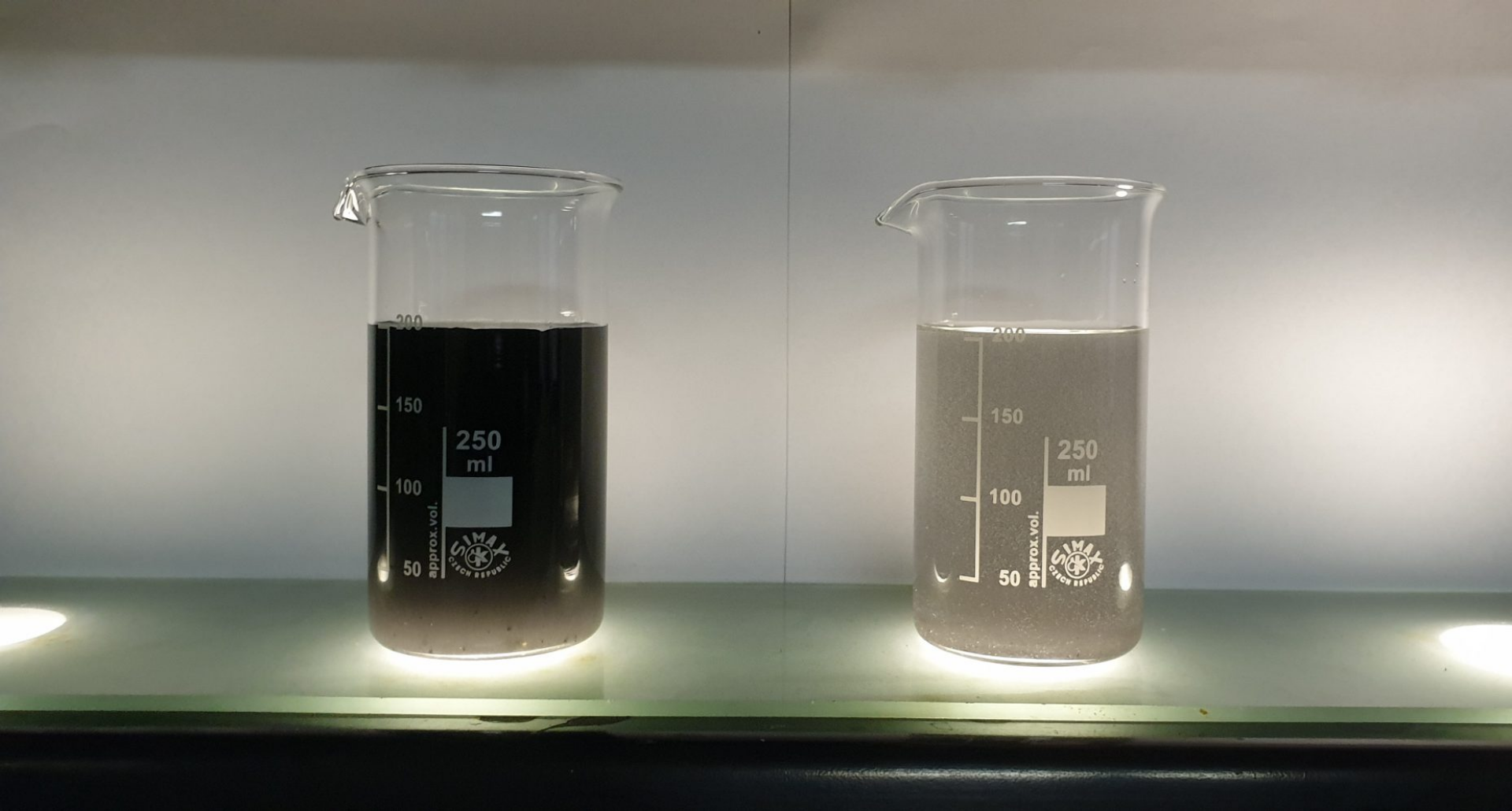C-WATERSOL C-OILSOL
Product
WMT C-SOL
Trade names
C-WATERSOL, C-OILSOL.
Product type
Compound of allotropic substances of carbon dispersed in a continuous liquid phase formed by bidistilled water or whole oil.
Components
Nanoparticles of: Graphene, Fullerenes, Carbon nanotubes.
Microparticles of: Graphite, Activated Carbon of mineral and vegetable origin.
Suspensive excipients.
Bidistilled water for use in: aeriform, water-based emulsifying liquids.
Whole oil for use in lubricating oils.
Particle size classes
Nanoparticles between 10-9 m and 10-6 m
Microparticles between 10-6 m and 10-3 m
Wide spectrum between 10-9 m and 10-3 m obtained by mixing the two previous classes.
Product supply
Diluted SOL ready to use.
Concentrate SOL to be diluted in the final product.
Application method
SOL in the liquid state.
AEROSOL conveyed through an aeriform.
Potential applications of C-SOL
Lubricants and/or protective
It can be used during the working phases through mixing and dispersion in the fluid body in order to reduce the friction generated during the metal working phases and, at the same time, protecting the machined surfaces:
- whether they are plastic deformation processes such as: extrusion, drawing, drawing, stamping, lamination, etc. etc.;
- whether they are material removal processes such as: drilling, milling, boring, turning, grinding, lapping, etc. etc.
Thickeners/coagulants and/or impregnants
It can be used as an aid to the filtration and/or separation of liquids and aeriforms through the following techniques:
- mixing and dispersion in the fluid body to be treated before the filtration and/or separation process in order to obtain the absorption/coagulation of the polluting particles and then proceed to the subsequent treatment with conventional removal systems on the market;
- coating/impregnation of the filter media used in current filters on the market in order to increase the absorption capacity of the polluting particles and retain a greater quantity.
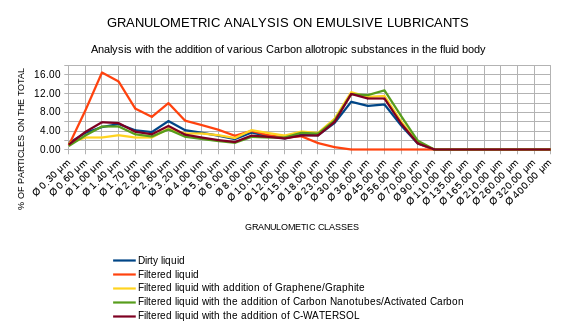 |
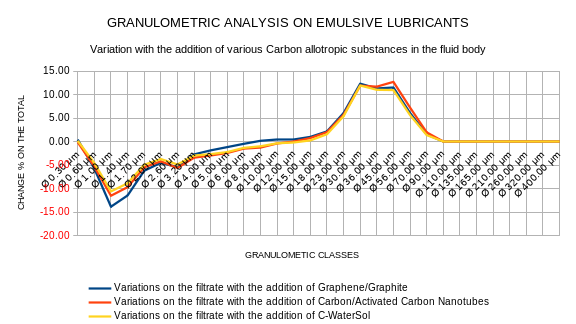 |
The analysis of the data shown in the graphs shows the reduction of the particles in the spectrum between 0.30 μm and 12.00 μm and the simultaneous increase of the particles in the spectrum between 15.00 μm and 100.00 μm .
This phenomenon is due to the thickening and coagulating properties of the allotropic substances of carbon, used individually or mixed together.
This property is therefore advantageously used to increase the degree of filtration/separation of said particles present in the fluid body to be treated.
Known technique
Use as lubricants and/or protective
Among the allotropic carbon substances taken into consideration: graphite, graphene, fullerenes (buckyball), fullerenes (buckytube) carbon nanotubes and amorphous carbon, graphite powder has long been used as a dry lubricant or combined with other elements such as: greases and/or oils (e.g. graphitizing of leaf springs), glues and/or paints (e.g. coating of contact and/or wear surfaces).
Although it might be thought that this industrially important property is entirely due to the flaking of the structure’s microlayers, in reality graphite has lubricating properties thanks to the absorption of air and/or water and/or oil between one layer and another of the planes lamellar of which it is composed.
Same argument, on a smaller scale, applies to lamellar nanostructures formed by graphene, and spheroidal nanostructures formed by fullerenes (buckyball).
Use as thickeners/coagulants and/or binding agents
On the other hand, amorphous carbon has a highly porous structure and a high specific area or, more properly, it has a high surface area per unit of volume.
Due to this conformation, it is able to retain many molecules of other substances internally, being able to accommodate the same molecules on its extensive internal surface area, presenting high adsorbing capacities.
Same argument, on a smaller scale, applies to nanostructures made up of fullerenes (buckytube) carbon nanotubes.
| C-WATERSOL CONCENTRATED 5:1/0,10 | C-WATERSOL DILUTED, READY TO USE 5:1/0,10 | |
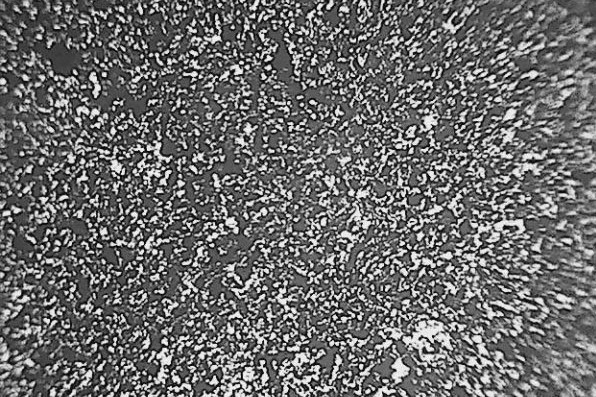 |
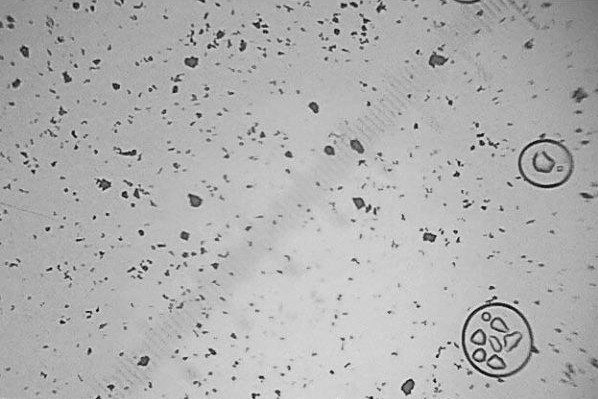 |
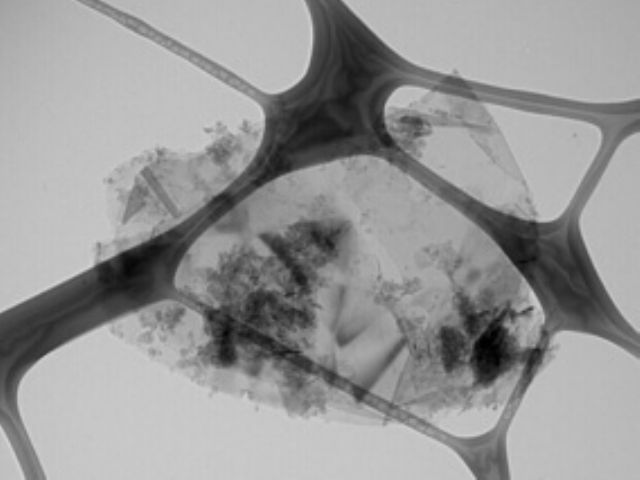 |
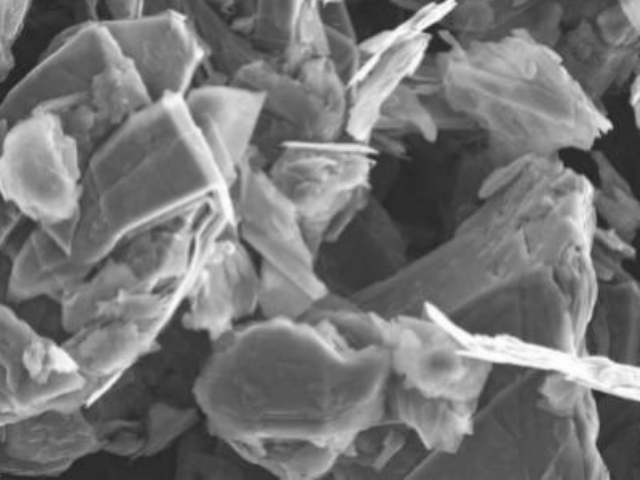 |
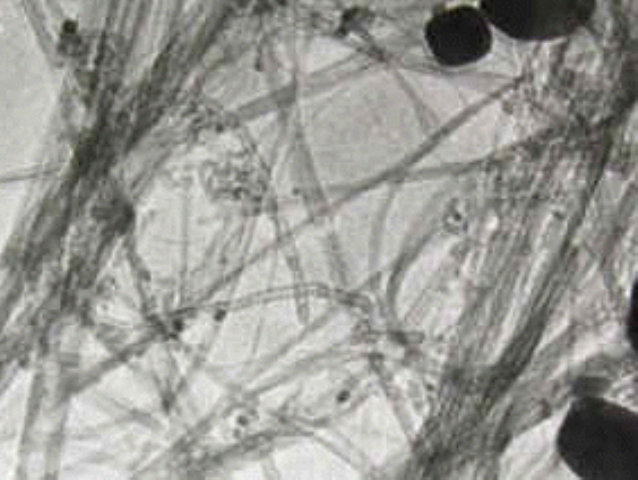 |
||
| GRAPHENE VIEW OF PROTECTIVE LAYER ON MATERIAL |
GRAPHITE VIEW OF LAMELLAR PLANES AS A LUBRICANT |
CARBON NANOTUBES VIEW THICKENING PROPERTIES OF POLLUTING PARTICLES |
Configurability
C-SOL products are highly configurable based on the specific applications required by our customers and their production processes.
They can be specially formulated to achieve and satisfy: one, two or more, or all potential applications simultaneously.
They can be supplied: ready to use or concentrated in order to save on: transport costs, storage spaces, maneuverability and operational management.
The correct formulation of the C-SOL product is carried out through processes supported by simulations and laboratory tests carried out by our Research & Development section.
This section is able to follow the customer throughout the period of application of the product and adapt it during the work in order to better respect the customer’s production-technical characteristics.
FOR FURTHER INFORMATION, APPLICATIONS AND PRODUCT CONFIGURATIONS, YOU CAN CONTACT OUR OFFICES!

